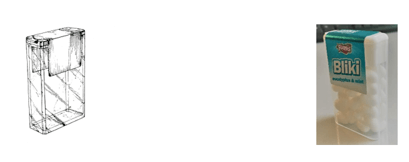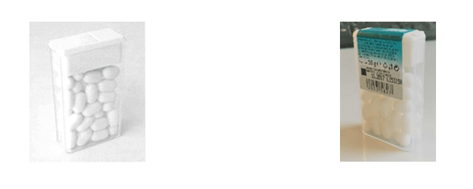
Ferrero definitively succeeds in protecting its rights on “Tic Tac” shape trade marks in Italy
In a case handled by our Italian IP team some time ago (which was previously reported on this blog here), the Court of Turin first, and subsequently the Court of Appeal of Turin, upheld the validity of Ferrero’s trade marks covering the shape of their well-known “Tic Tac” container and found that the container of “Bliki” mints produced by the Czech company Mocca spol. s.r.o. (hereinafter “Mocca”) infringed Ferrero’s shape trade marks.
By order dated May 11, 2023, the Italian Supreme Court definitively settled the litigation between Ferrero and Mocca: it declared Mocca’s appeal to the Supreme Court to be inadmissible and confirmed the decision of the two lower courts regarding the validity of shape trade marks.
In particular, judges of the Supreme Court provided an interesting interpretation of paragraphs ii) and iii) of article 7(1)(e) of the EUTMR Reg. 2017/1001 and article 9 of the Italian Intellectual Property Code (IIPC) in relation to the shape of food containers which states that the following shall not be registered: “signs which consist exclusively of the shape: ii) which is necessary to obtain a technical result… or iii) which gives substantial value to the goods”.
Background to the Tic Tac litigation
In 2017, Ferrero sued Mocca claiming, among other things, that the production and marketing of Bliki mints in a particular container, infringed its shape trade marks (Italian trade mark registrations n. 1564272 and n. 1478173 – hereinafter “TIC TAC Trade Marks”) which comprise the container of Ferrero’s “Tic Tac” product.
The images below depict the TIC TAC Trade Marks (top left and bottom left, the latter being a photograph of the container full of mints and bearing the label but without the word trade mark “Tic Tac”) and the Bliki mints (top and bottom right photographs):

(n. 1564272)

(n. 1478173)
In response to trade mark infringement allegations by Ferrero, Mocca attempted to argue that the TIC TAC Trade Marks were invalid because the shape covered by those marks were exclusively “necessary to obtain a technical result” or a shape “which gives substantial value”.
Mocca’s arguments were totally rejected by the Court of Turin and the Court of Appeal of Turin.
The same was done, this time definitively, by the Supreme Court who, despite declaring the Mocca’s appeal to be inadmissible, provided a final determination and interesting insights into how both the above validity requirements should be interpreted.
Guidance provided by the Italian Supreme Court
The Supreme Court was tasked with verifying, among the other things, whether the Court of Turin and the Court of Appeal of Turin were correct in their respective decisions to uphold the validity of Ferrero’s trade marks on the famous “Tic Tac” containers.
Even though there existed an earlier patent and utility model owned by Ferrero (which lapsed years ago) concerning a container characterized by a specific hermetic closing system which was claimed to be present in the “Tic Tac” container, the Supreme Court held that the shape protected by the TIC TAC Trade Marks was not exclusively necessary to obtain a technical result. In particular, the Supreme Court reasoned that the shape was creatively inspired as a way to differentiate Ferrero’s product and did not constitute a useful form that was exclusively aimed at characterizing the product and was, again exclusively, related to its function. According to the Italian Supreme Court judges, in a logical sense, it was also possible for the cap to have taken other shapes, without functionally impairing the ability to contain and distribute “Tic Tac” mints.
In considering the question of whether the shape gives substantial value, the Supreme Court confirmed that the aesthetic features characterizing the TIC TAC Trade Marks did not influence the purchasing choice of consumers. Rather, the Court held that consumers are more likely to be driven to satisfy a need and will purchase a product from a specific company or brand – which in this case, was Ferrero.
After the above findings on validity, the Supreme Court turned to consider infringement. The Supreme Court upheld the Turinese judges’ views on Mocca’s Bliki containers infringing the TIC TAC Trade Marks, noting that the Bliki containers had:
- the same rectangular and transparent parallel piped shape;
- the same white closing system that is inserted into the top of the container; and
- the same label positioning at the top of the container.
Comment
This is the first time the Supreme Court has dealt directly with the validity of Ferrero’s TIC TAC Trade Marks as well as with their infringement.
The recent decision is a highly significant precedent on shape trade marks in the food industry. Indeed, it gives very well-balanced insights on factors going to the protection of food containers through shape trade marks that the industry should pay close attention to.








